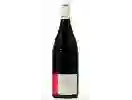
Winery Vignerons de l'EnclaveCairanne
In the mouth this red wine is a powerful with a nice balance between acidity and tannins.
This wine generally goes well with beef, game (deer, venison) or lamb.
Taste structure of the Cairanne from the Winery Vignerons de l'Enclave
Light | Bold | |
Smooth | Tannic | |
Dry | Sweet | |
Soft | Acidic |
In the mouth the Cairanne of Winery Vignerons de l'Enclave in the region of Rhone Valley is a powerful with a nice balance between acidity and tannins.
Food and wine pairings with Cairanne
Pairings that work perfectly with Cairanne
Original food and wine pairings with Cairanne
The Cairanne of Winery Vignerons de l'Enclave matches generally quite well with dishes of beef, lamb or game (deer, venison) such as recipes of beef with dark beer, leg of lamb with spices or rabbit legs with fresh cream.
Details and technical informations about Winery Vignerons de l'Enclave's Cairanne.
Discover the grape variety: Muscat à petits grains
Muscat à petits grains is a white grape variety of Greek origin. Present in several Mediterranean vineyards, it has several synonyms such as muscat de Die, muscat blanc and frontignac. In France, it occupies a little less than 7,000 ha out of a total of 45,000 ha worldwide. Its young shoots are downy. Its youngest leaves are shiny, bronzed and scabrous. The berries and bunches of this variety are all medium-sized. The flesh of the berries is juicy, sweet and firm. Muscat à petits grains has a second ripening period and buds early in the year. It is moderately vigorous and must be pruned short. It likes poor, stony slopes. This variety is often exposed to spring frosts. It fears mildew, wasps, grape worms, court-noué, grey rot and powdery mildew. Muscat à petits grains is used to make rosé wines and dry white wines. Orange, brown sugar, barley sugar and raisins are the known aromas of these wines.
Informations about the Winery Vignerons de l'Enclave
The Winery Vignerons de l'Enclave is one of of the world's great estates. It offers 135 wines for sale in the of Cairanne to come and discover on site or to buy online.
The wine region of Cairanne
The wine region of Cairanne is located in the region of Rhône méridional of Rhone Valley of France. Wineries and vineyards like the Domaine Boutinot or the Domaine J. Boulard produce mainly wines red, white and pink. The most planted grape varieties in the region of Cairanne are Mourvèdre, Roussanne and Clairette, they are then used in wines in blends or as a single variety.
The wine region of Rhone Valley
The Rhone Valley is a key wine-producing region in Southeastern France. It follows the North-south course of the Rhône for nearly 240 km, from Lyon to the Rhône delta (Bouches-du-Rhône), near the Mediterranean coast. The Length of the valley means that Rhône wines are the product of a wide variety of soil types and mesoclimates. The viticultural areas of the region cover such a distance that there is a widely accepted division between its northern and southern parts.
The word of the wine: Pinenc
See servadou iron.














